Meet the fam
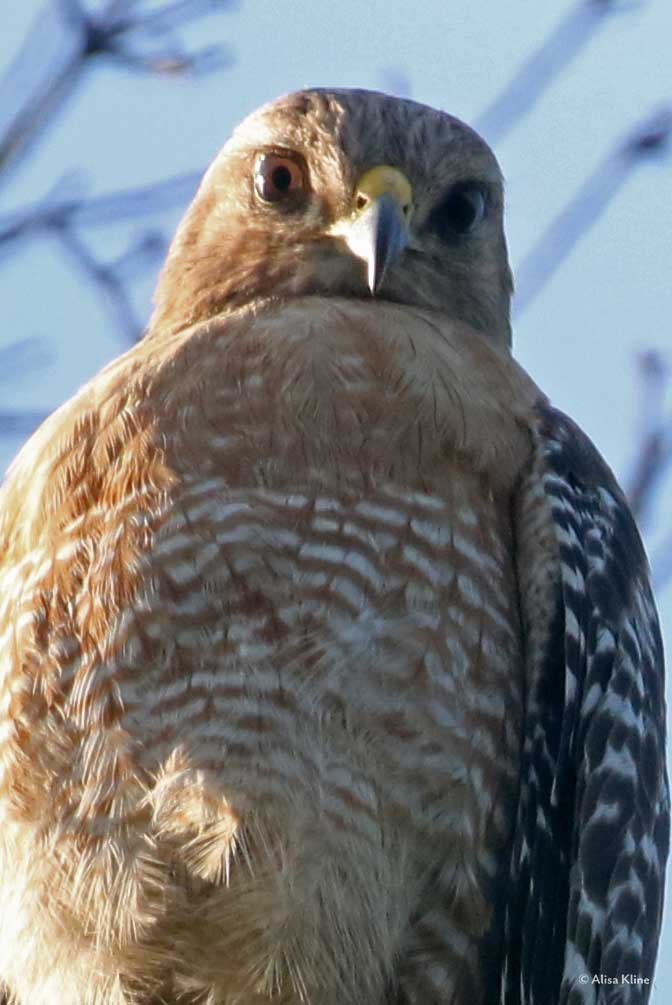
Our red-shouldered hawk pair has raised three chicks this year. The chicks have fledged, but so far, they have’t strayed very far from the nest. Look for everyone on dead trees north of the nest. Definitely use the viewing spot nearest Memorial (click the link). The dead trees they hang out in are best seen from the asphalt path.
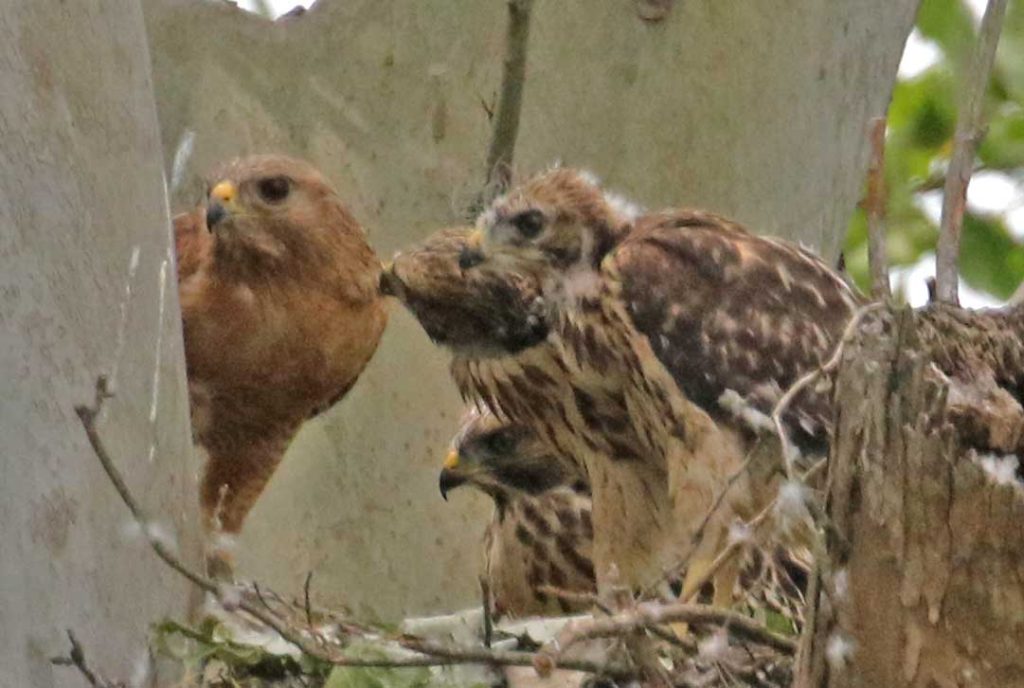
Mom and the triplets. They are ranged from youngest to nearest the camera and oldest furthest away. You can really see how much younger that closest chick is. All that head fuzz.
I hadn’t spent time with the hawks since the lockdown, but I really wanted to sneak a peek. So last week, I visited the nest and saw mom return with a sizable meal (rat?). She had three mostly grown chicks (mostly grown in this case is six or seven weeks).
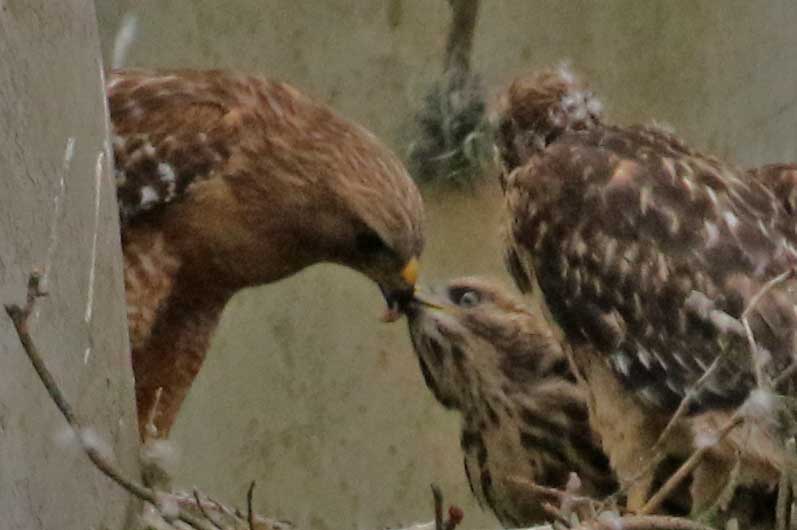
Mom feeding the chicks
The photographs I took were disappointing because, in my excitement, I apparently forgot how to use my camera properly. So, I went back the next day and found two of the juveniles out of the nest. The third was still in the nest.
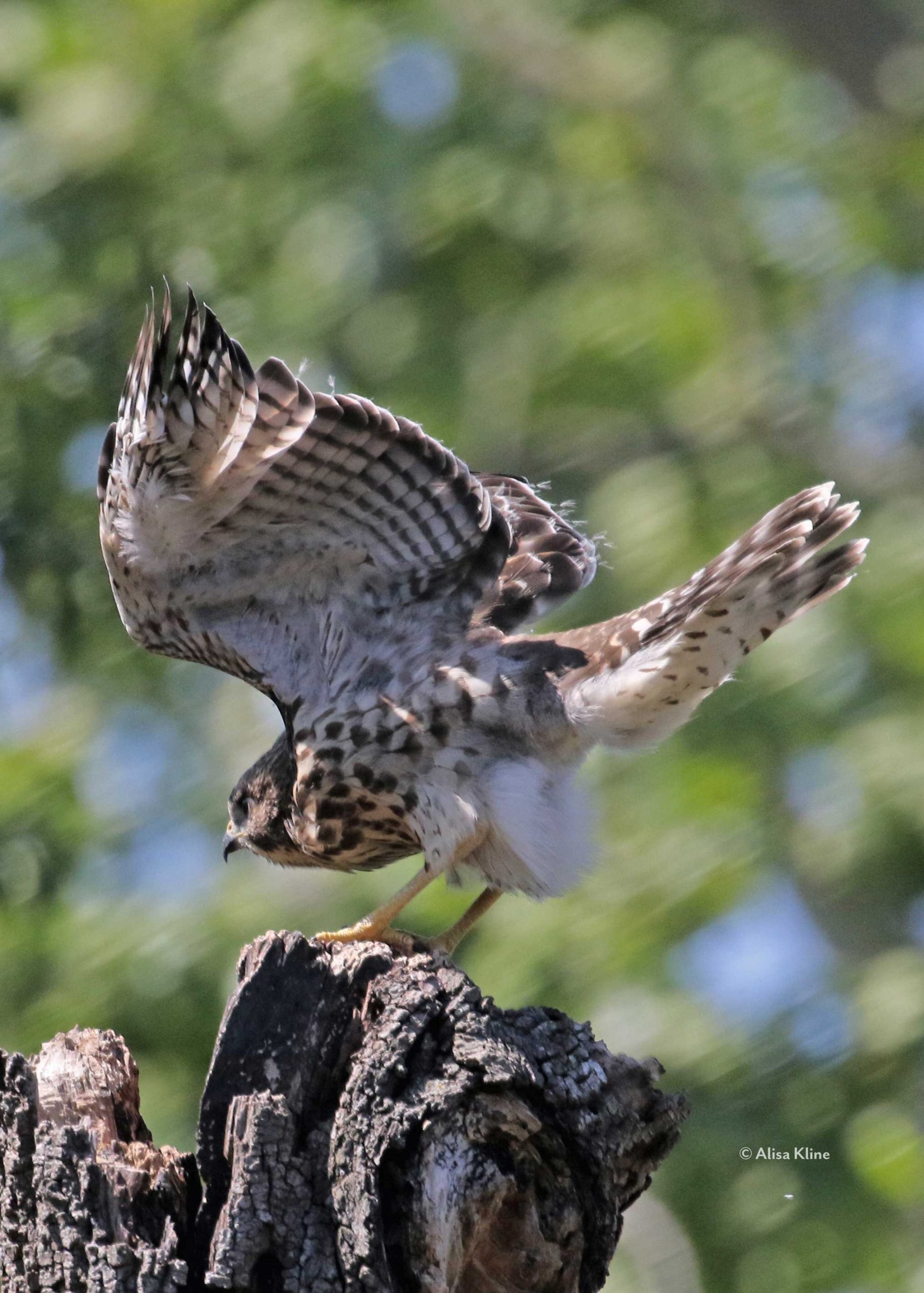
This is the oldest chick landing on a dead tree near the nest.
Mom swooped by visiting about once every 45 minutes. But during the two hours I spent with the brood, no adult stopped by to feed the chicks.
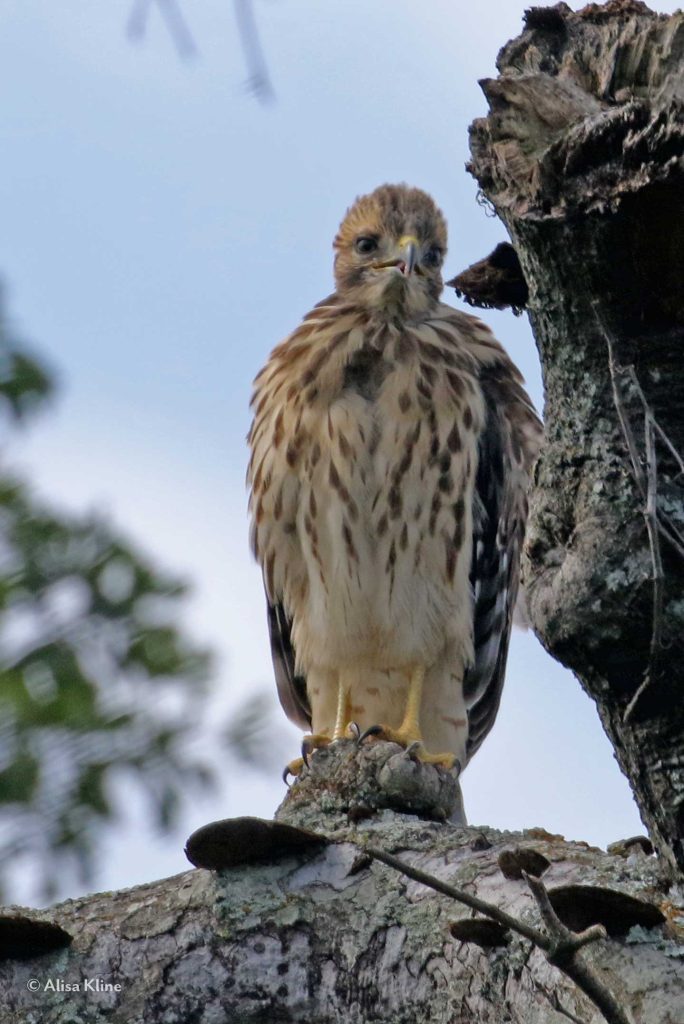
Meet the middle chick. You can see this one’s generally fuzzier than the older chick and he or she has a bald patch in the middle of the chest. These are often the last of the juvenile feathers to come in. Make sure to notice that tiny little tongue.
Between a couple of hours one day and a couple of hours the next, I never saw the paler adult (dad) and I noticed that these chicks didn’t seem to be exactly the same ages.
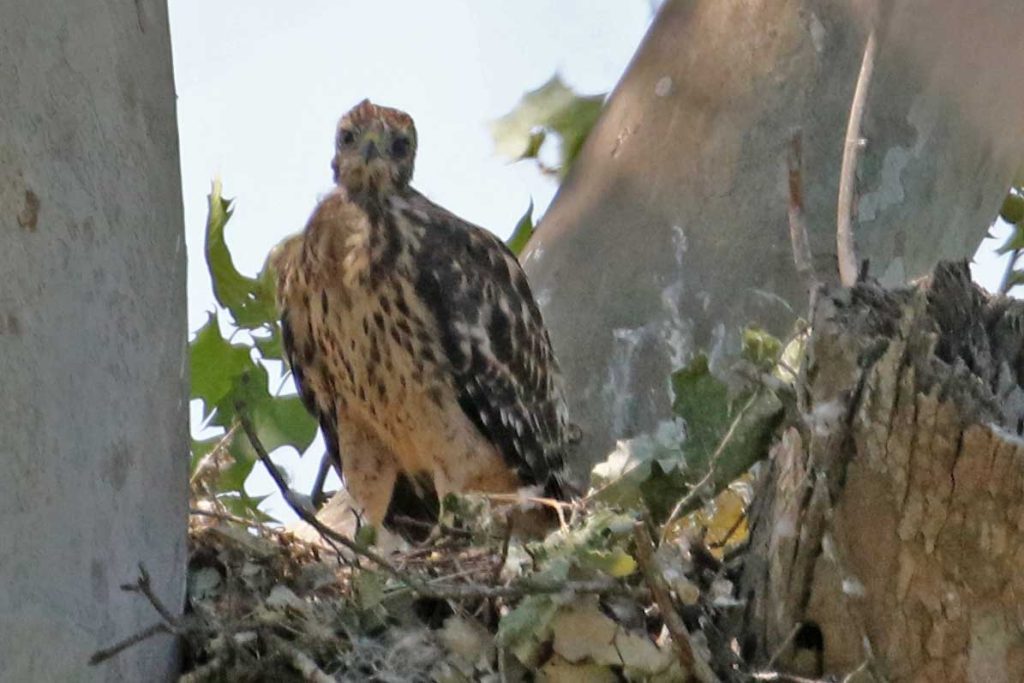
For the first two days, this youngest chick was always on the nest. The day dad showed up, the nest was empty, so this one, too, has likely fledged.
People who know what they are doing (read, not me), can age juvenile hawks by the state of their tail and wing feathers. I know this because of the internet. So on day 2, I took nearly 700 photos trying to get shots of all their feathers.
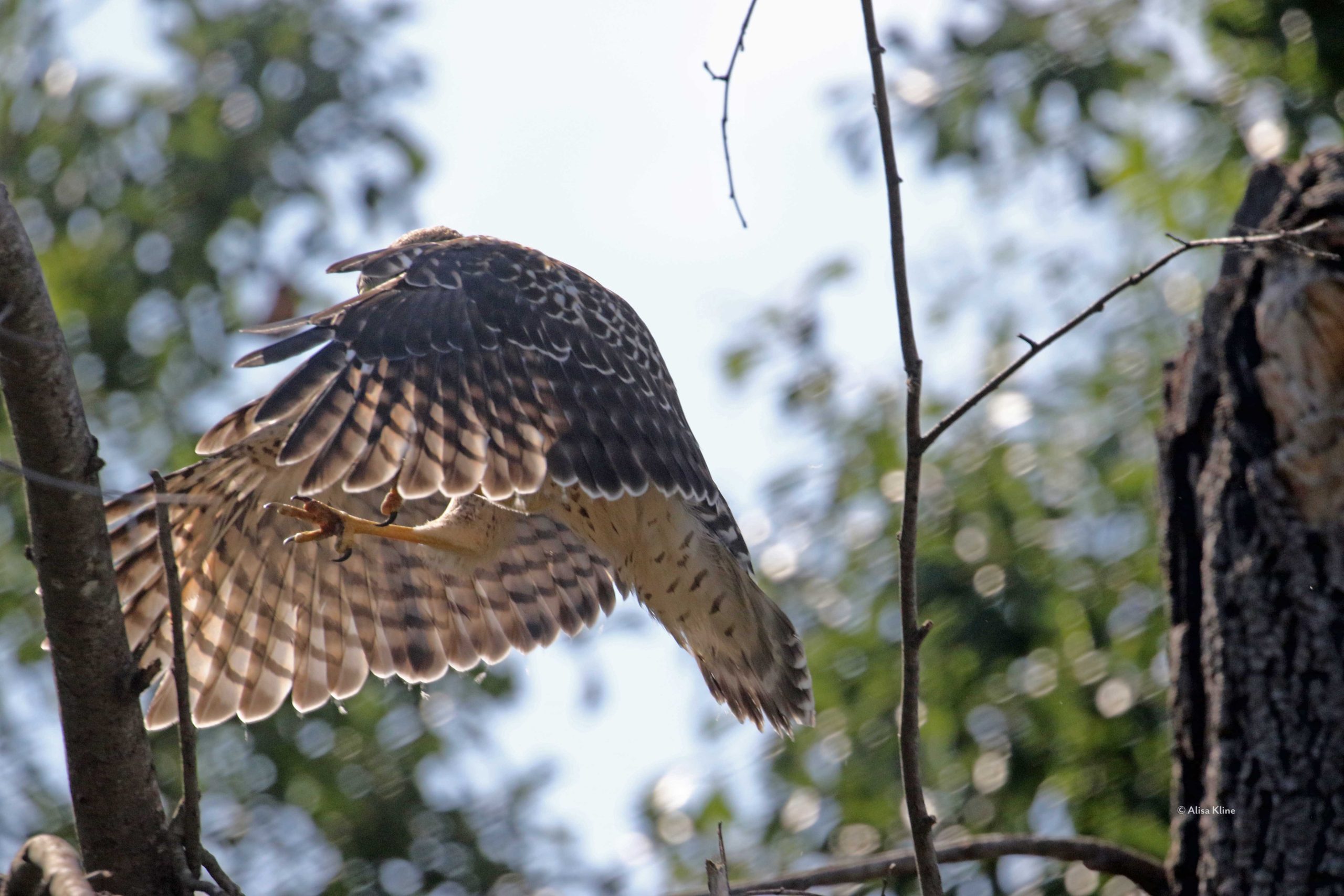
Check out those wing feathers! And I love the claws reaching out for the landing.
I had formed a hypothesis that the oldest chick was an 18-month-old juvenile who replaced the first mom and at least one of the other two were her chicks. This is not important because yesterday, when I went back for a quick check, there was pale dad, high up in a tree, judging my foolishness. That’s him at the top of the post.
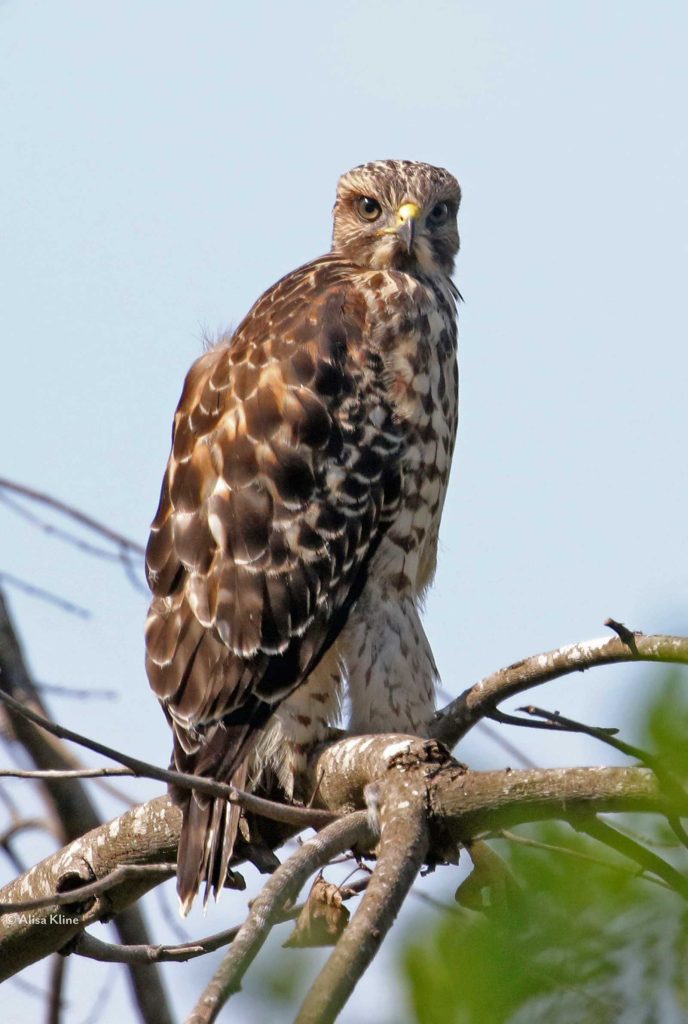
This chick seems to have inherited the stare.
Dad is responsible for most of the feeding duties and with a brood this big (last year he had one chick), he has probably been very busy.
But the bottom line is I’ve got a lot of photos!
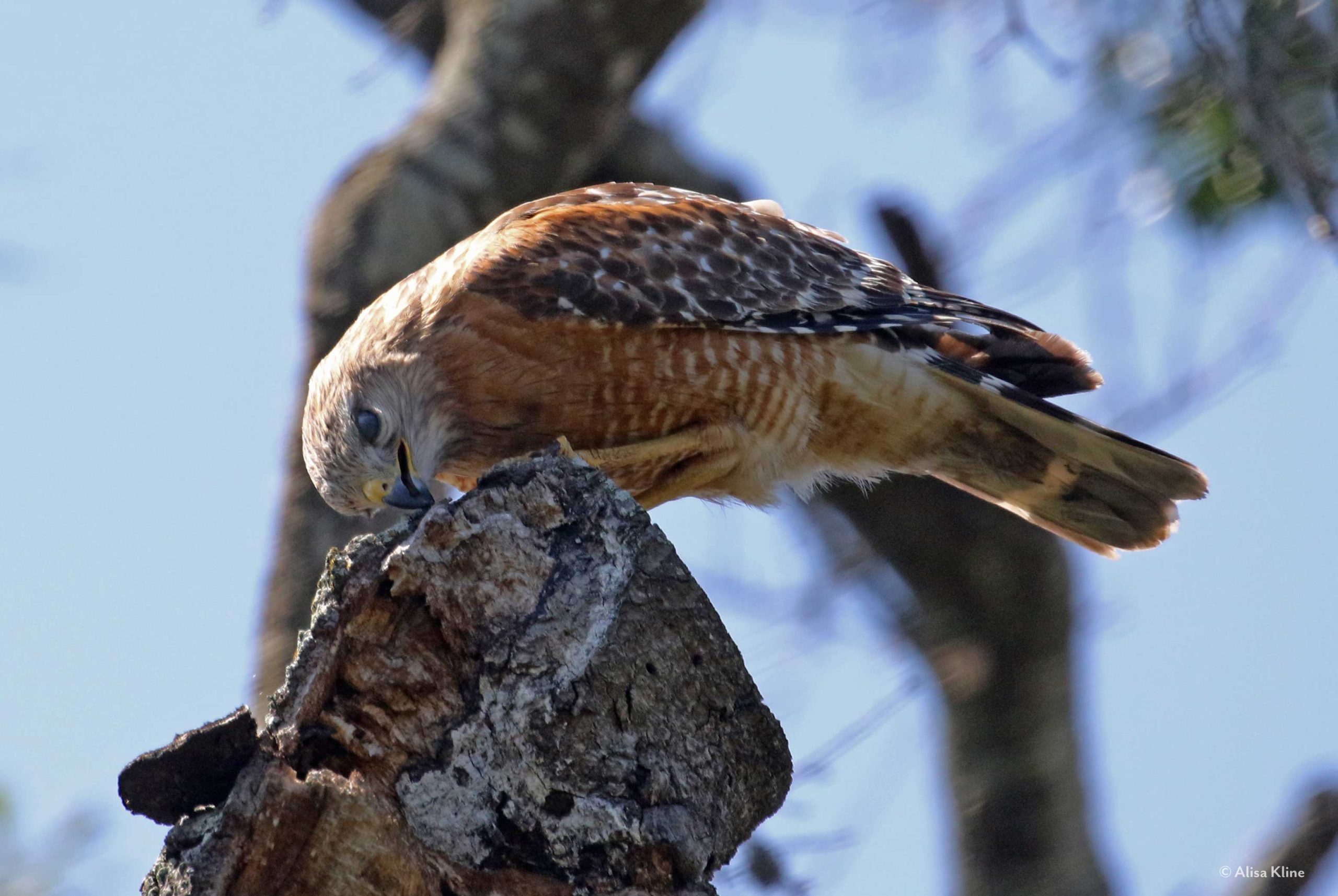
This is mom cleaning her bill.
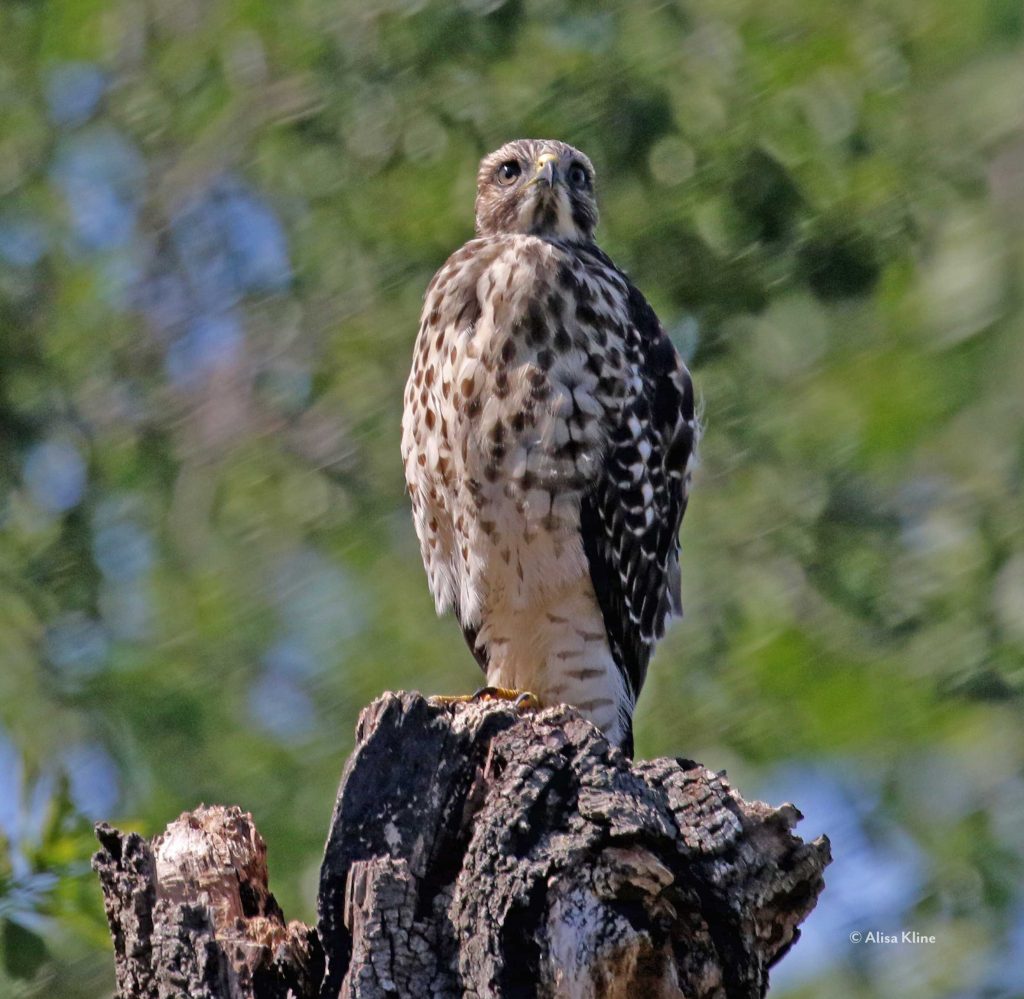
Notice that knob of wood to the left and just below the hawk. I think that was formed by years of hawks doing exactly what that mom is doing in the photo above.
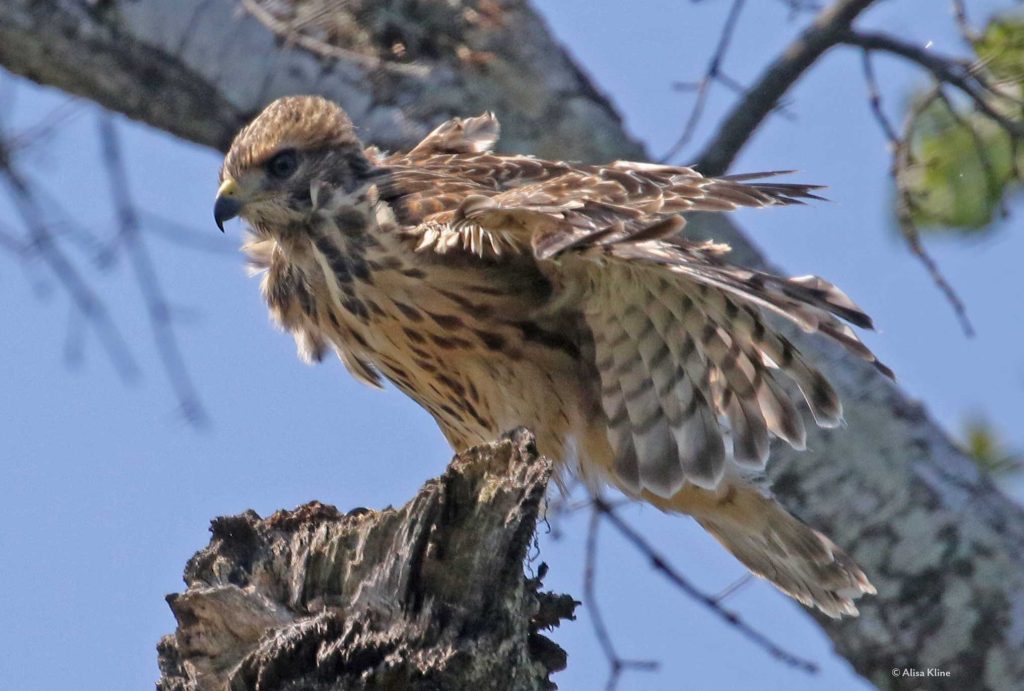
It is simply hard to look dignified in the wind.
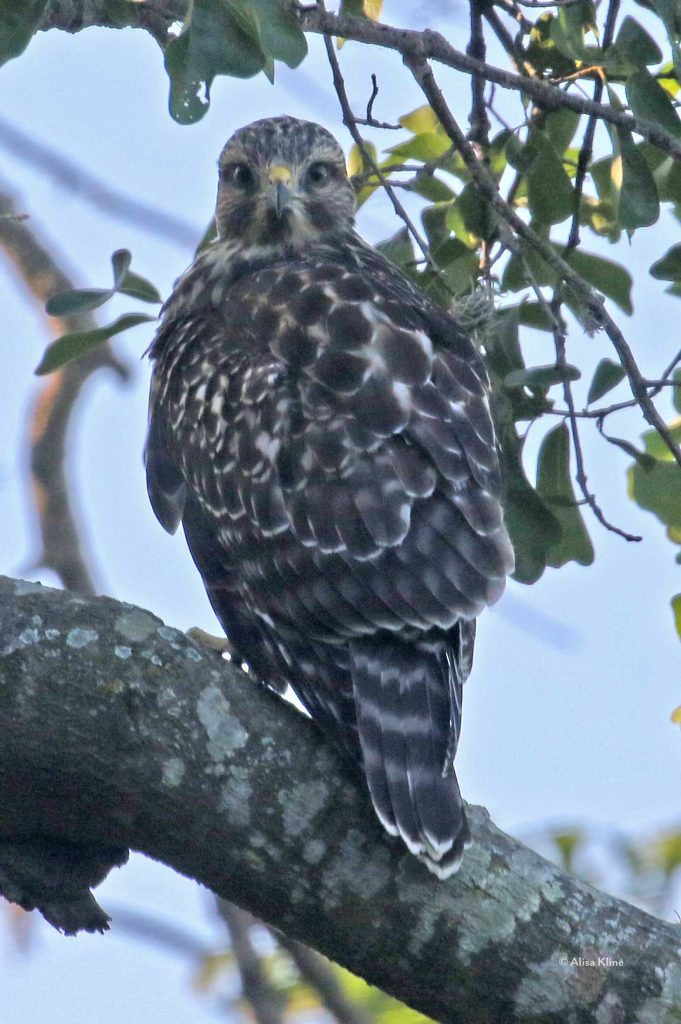
A good stare can be done in any direction!
Reading this over, I realize that I never explained how we came to have chicks of three different ages. Hawks don’t lay all their eggs at once. There is usually one to three days between eggs, so the youngest chick might be nearly a week younger than the oldest. Given that they go from egg to fledge in six or seven weeks, that one-week difference in age is like the difference between a college senior and a middle schooler.
Questions, comments? blog@alisakline.com

